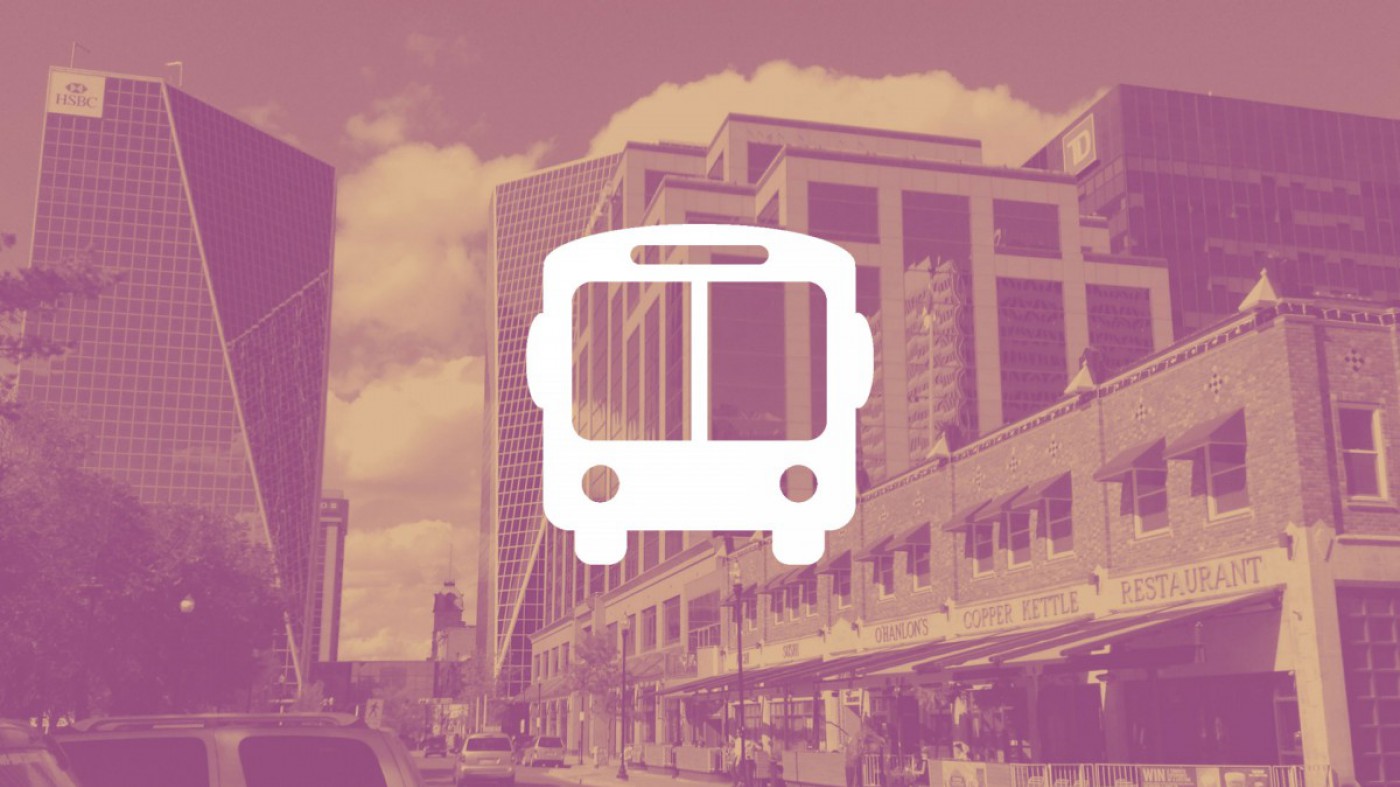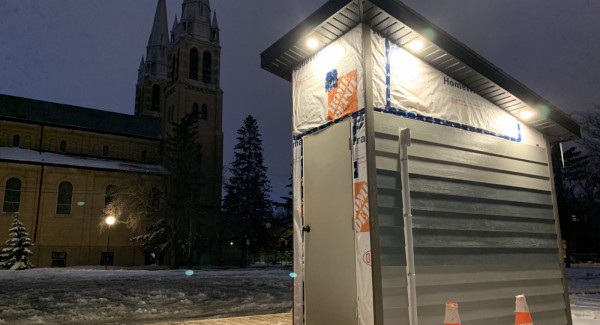Regina Municipal Election 2020: Public transit

In preparation for Regina’s 2020 municipal election, the Sask Dispatch asked progressive community members, activists, and experts to pick one pressing issue facing the city, and write about how to address it. Carla Harris, a disability justice advocate, weighs in on the city’s track record and plan for public transit.
How long have you lived in Regina and what ward do you live in?
Since 2018, I have lived in Ward 1.
What is your occupation?
Payment Services Officer with Service Canada during the week, and I’m a poet and do consulting as an Access Analyst in my spare time.
How has the mayor and council approached the subject of public transit over the past four years?
The trick with this question is that different areas in our city have very viable and practical transit routes, while other routes run less often, or are looping routes, which can be very frustrating for workers who can’t come and go directly to their destination.
Different areas in our city have very viable and practical transit routes, while other routes run less often, or are looping routes, which can be very frustrating for workers who can’t come and go directly to their destination.
What are some of the challenges facing transit users in the city?
When I was a young kid from a small town, waiting to pass my driver’s test, I didn’t learn how useful public transit could be. When I lost my license for health reasons, I could afford accessibility options that are only available for financially privileged people, like taxis. It wasn’t until I was sexually assaulted by a taxi driver that I really started looking at how our transit system affects local residents. Until then, taxis had taken me to every part of the city that was a part of my job and my personal life. When I switched to riding the bus after I was assaulted, I saw that transit in Regina was a primary barrier to careers for several reasons.
Companies in Saskatchewan are currently posting jobs online, but in those job descriptions, they often don’t disclose which location is hiring. You can call, but I often didn’t receive responses. And with banks or stores that had more than one location in the city, I had no way of finding out if I could get to and from the location if I was hired. Saskatchewan Government Insurance (SGI), for example, has locations downtown, in Rochdale, and some outside of the city. Many companies talk about equity in hiring, but if their locations aren’t accessible by transit, their corporate culture will never reach that goal.
Often the accessibility barriers in Regina happen when one bus route is accessible, but the return route is not. And having easy access to one bus stop doesn’t mean you can get to and from all transit destinations. For example, my house has a stop right in front and across the street in the Whitmore Park area. However, the buses that stop there never go to the university, so I had the choice to take buses to the mall hubs and transfer to a bus that goes to campus, or walk. The walk was 22 minutes, the ride was 48.
In particular, the city needs to look at the changing map of where food is sold in Regina and ensure there are grocery stores on each residential route.
Google maps is an easy tool, I challenge you to try this if you don’t use Regina Transit. Enter your home address and check how you would come and go through a usual week. Make sure you use the advanced search so you can enter the times and days of the week that you need: look up your workplace, your childcare/school location, your grocery store, your favourite bar or restaurant, your coffee shop. How many transfers would a day of errands or work mean for you? How many of your routines would have accessible routes, and how many hours would you spend on the bus or waiting for the bus each day?
In particular, the city needs to look at the changing map of where food is sold in Regina and ensure there are grocery stores on each residential route.
While the maps give you a starting picture, remember that they don’t show where sidewalks exist and where they don’t. That is often the biggest problem. For example, my dentist moved out of downtown to a location on Pasqua Street. I looked up the map on Google, saw the best route, and it wasn’t until I was dropped off that I realized there was no sidewalk. I walked in the deep ditch in the winter for five blocks to get there. Only then did I realize that that is also the location for UNIFOR. So I started looking up how a person like me would access any of their union representatives in Regina and I found that the vast majority of union offices in Regina are inaccessible by transit.
Also, while Regina is proud to have a discounted pass program for eligible low-income earners, it is not an easy program to access. The pass can only be purchased downtown or at 333 Winnipeg Street during the limited hours that the offices are open, and many people are unaware that the program exists in the first place. The city shouldn’t be means-testing people who need access to municipal services – including transit. Instead, the city should work with local community programs, support centres, shelters, employment facilitators, and community organizations for marginalized people and let those organizations determine the most effective, efficient, and dignified ways of ensuring their clients have access to affordable transit. Those communities know what they need and those organizations are well-suited to make sure that their clients are aware of the services that are available to them.
Thus far, the city has been using ridership numbers and monthly ticket purchases to decide which areas merit regular buses, an approach that does nothing to encourage the improvement of existing services or promote more transit usage.
Thus far, the city has been using ridership numbers and monthly ticket purchases to decide which areas merit regular buses, an approach that does nothing to encourage the improvement of existing services or promote more transit usage.
What kinds of political, social, or economic factors do you think play into their approach to this issue?
Regina Transit is currently focused on providing bus services that serve the highest-paid workers in the city. Many of those people still choose to buy vehicles, while folks who are paid the least and have the most unconventional hours working in the service industry do not have transit routes running often enough for them to access their work via the bus. If we focus on ensuring transit access to workplaces such as restaurants, bars, and grocery stores, that would go a long way toward opening up the job market for workers who can’t or don’t drive, as well as saving people money on cab fare and making transit generally more efficient and more desirable.
Regina Transit is currently focused on providing bus services that serve the highest-paid workers in the city. Many of those people still choose to buy vehicles, while folks who are paid the least and have the most unconventional hours working in the service industry do not have transit routes running often enough for them to access their work via the bus.
How does attention or lack of attention to transit impact the city as a whole? Who is impacted the most?
Jobs that offer part-time employment and shift work frequently schedule workers for weekend and evening shifts. It was only in 2019 that the city first extended the hours of their Sunday bus schedule by enough that some people could work a five-hour shift on a Sunday, albeit during a limited set of hours. COVID seems to have given the city an excuse to reduce the number of their routes, particularly on weekends, so once again, people without access to vehicles are restricted in the jobs and shifts they can take. This is a major problem given that unemployment is so high.
There are various reasons why people can’t or don’t drive. Youth, seniors, and disabled folks might be unable to hold a driver’s license. Many newcomers arrive having never driven, and folks from marginalized groups are very often receiving lower pay for equal work, something that means they have reduced ability to afford the expense of vehicle ownership.
Some cities have brought in engineers to ensure that transit routes continue to serve the changing needs of residents. Regina has chatted about it, but has yet to take that step, which is a problem as the city grows and jobs move away from the downtown core.
What can the city do to make transit a priority? What would success look like?
I come from a background as an employment facilitator. I think the city should be hosting career fairs that are built around the needs of transit users, and transit routes and work shifts should be built to complement each other. Another common problem is the difficulty of finding childcare that’s easily accessible for a family that uses the bus. The city needs to be looking at these factors, and not just at current ridership numbers when it makes decisions about bus routes.
Another common problem is the difficulty of finding childcare that’s easily accessible for a family that uses the bus.
What can residents do to set the agenda on this issue?
Call the City of Regina’s main line, or place a Service Request on their website to let them know that the city’s Affordable Access Program is failing to reach the people who need it. The program, which provides bus passes at 20 per cent off for qualifying riders, is only available for purchase at two locations (downtown and at the far northern edge of the city), which are only open on weekdays from 8 a.m. to 4:30 p.m. or 9 a.m. to 4:30 p.m., respectively.
Is/are there particular candidate(s) for mayor or council who you think would do well at addressing this topic?*
Shanon Zachidniak. (Disclosure: I volunteered to deliver fliers for her campaign.) Shanon began to launch discussions about environmental and green futures of Regina when she started the EnviroCollective, so while we both came to join in the discussion about transit for different reasons, we share a common goal.




